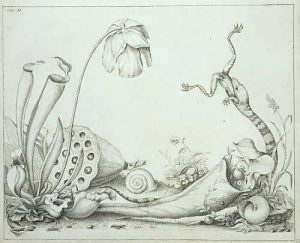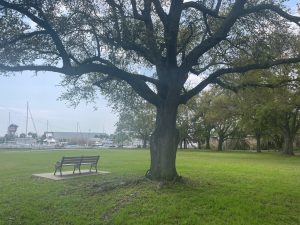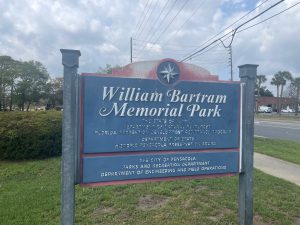
If you’ve ever taken any of our Master Naturalist classes, you know that hikes can sometimes take a while. We instructors are fascinated by the plants and animals around us, and love revealing details about what makes them special. This may include stopping every few minutes to share impossible-to-pronounce Latin names, or fun facts about differentiating between bird and bat poop. But if you’d been around 250 years ago to tag along with William Bartram on his botanical explorations through the area, you’d have felt right at home. Bartram was born in Pennsylvania, taking after his naturalist father and showing an early talent for scientific drawing as a child. He undertook a multiyear exploration through South and North Carolina, Georgia, and Florida while in his 30’s. His journal/scientific notes were published in 1791, “containing an account of the soil and natural productions of those regions, together with observations on the manners of the Indians.” Bartram’s writing is captivating and detailed, pulled together poetically with the eye of a born observer.

Reading through his book, it is fascinating to see his curiosity and (often correct) theories about why pitcher plants grow the way they do, or why alligators grunt in the spring. His writing would be right at home in a blog like this one—full of interesting facts about the plants and animals he observes, but with a personal, human touch. I was amused by his relatable description of setting up a riverside campsite on the “highest part of the ground” with a good view of the river, which was “a matter of no trivial consideration to me, having good reason to dread the subtle attacks of the allegators, who were crouding about my harbour.”

Bartram was wide-eyed and enthusiastic about his new surroundings, and open-minded to the point that he was invited to audiences not only with state governors but also Native American tribesmen. Besides documenting new plants and wildlife, Bartram spent a considerable amount of time in Choctaw, Creek, Muscogee, and Cherokee lands, exchanging information with them. He was interested in their customs, food, and hunting methods, and seemed to advocate for peaceful and productive relationships between Europeans and American Indians.

Bartram spent a relatively short time in Pensacola, but long enough to describe the bay, forts, healthy stands of live oak trees, and a species of Sarracenia (pitcher plants) that he’d not encountered frequently. There are several historic markers about William Bartram in Pensacola, the most significant being a small waterfront greenspace along Bayfront Parkway, know as Bartram Park. It is adjacent to the Florida Public Archaeology Museum (also a great way to learn about local history) and due south of Seville Square.
Markers in Bartram’s name dot the southeastern United States, including a substantial trail that intersects with the Appalachian Trail in north Georgia. To learn more about Bartram’s time in our area, pick up a copy of his book or check it out online. I wish he were still around—he’d make fantastic guest speaker for our Master Naturalist classes!
 7
7
